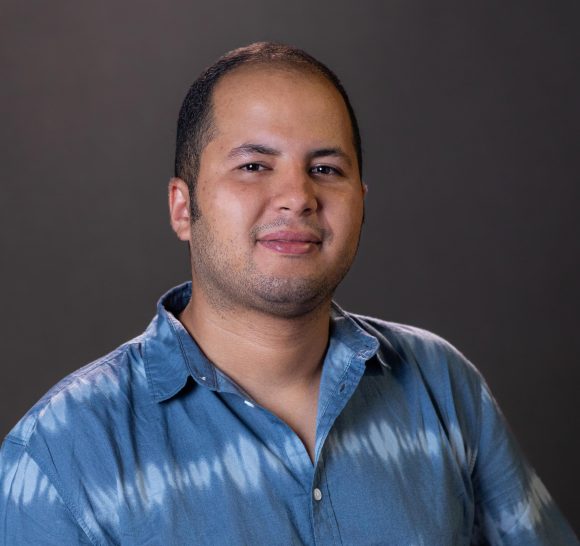Welcome New Grand Challenge Initiative Postdoctoral Fellow – Kamal Diki
Announced on September 26, 2022
Join us in welcoming Kamal Diki, Ph.D., to Schmid College as a Grand Challenge Initiative Postdoctoral Fellow!
Dr. Diki obtained his Ph.D. in Mathematical Models and Methods in Engineering from Politecnico di Milano where he was a Marie Sklodowska-Curie fellow of the Istituto Nazionale di Alta Matematica (INdAM). His research interest is in (hyper)-complex analysis and operator theory with potential applications in quantum mechanics and time-frequency analysis. Recently, Dr. Diki started exploring new research directions in theoretical machine learning (ML), with particular interest in neural networks (NN) and support vector machines (SVMs). His research in this area consists of investigating new algorithms for NN and developing further properties of some RBF kernels used in SVMs.

Q&A with Dr. Kamal Diki
What is your current area of research and how did you become passionate about this area?
My research interest is in (hyper)-complex analysis and operator theory with potential applications in quantum mechanics and time-frequency analysis. Recently, I started exploring new research directions in theoretical machine learning (ML), with particular interest in neural networks (NN) and support vector machines (SVMs). My research in this area consists of investigating new algorithms for NN and developing further properties of Gaussian RBF kernels used in SVMs. During the first year of my undergraduate studies in Casablanca I was fascinated by stories of famous mathematicians at that time like Grigori Perelman, Cedric Villani, and Maryam Mizarkhani. The book of Villani entitled ”Birth of a Theorem” motivated me to start a mathematical research and teaching career. I truly enjoyed the story of Villani’s book which explains how the research process grows leading to the ”Theorem” worthy of the prestigious Fields Medal in Mathematics.
What would you be if you weren’t a scientist?
I think Mathematics and arts are very related to each other. Behind the technical part of equations and algorithms in Mathematics there is a beautiful artistic touch allowing to see how different mathematical proofs, concepts and reasonings lead to surprising facts in our universe. I think if I was not a mathematician, I would love to be an artist. One of the very rare people who prove this connection between science and art is Leonardo da Vinci who was an artist, engineer, scientist, and mathematician.
What is the best advice you’ve ever received?
The best advice I received is that in research sometimes we are professors and sometimes we are students. Therefore, we always should be open to learn from each other by discussing and starting collaborations. I was also encouraged to work on projects that I enjoy in science and mathematics since the best results come when we are doing something we are excited about.
What excites you the most about GCI?
I am excited about GCI since I can work on my research projects with leading mathematicians based on various international collaborations. I am also very interested in learning new teaching skills from my experience within my GCI experience. For example, in the future, I would like to apply the discussion style used in GCI courses to some math classes. Of course, this would be a challenging approach to use in a math class, but it gives me an excellent idea on how to make a math class more interactive for students.

